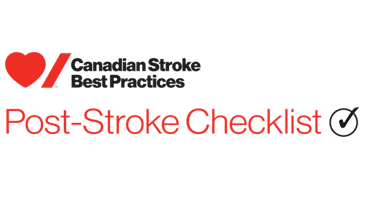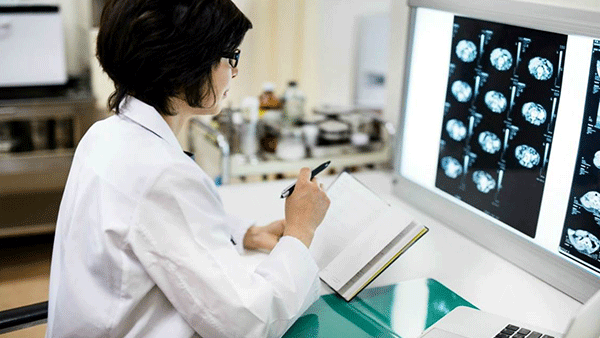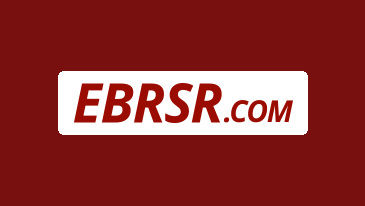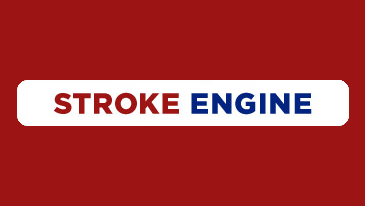- Definition and Considerations
- 1. Initial Stroke Rehabilitation Assessment
- 2. Stroke Rehabilitation Unit Care
- 3. Delivery of Inpatient Stroke Rehabilitation
- 4. Outpatient and In-Home Stroke Rehabilitation (including Early Supported Discharge)
- 5.1 Management of the Upper Extremity Following Stroke
- 5.2. Range of Motion and Spasticity in the Shoulder, Arm and Hand
- 5.3. Management of Shoulder Pain & Complex Regional Pain Syndrome (CRPS) following Stroke
- 6.1. Balance and Mobility
- 6.2. Lower Limb Spasticity following Stroke
- 6.3. Falls Prevention and Management
- 7. Assessment and Management of Dysphagia and Malnutrition following Stroke
- 8. Rehabilitation of Visual and Perceptual Deficits
- 9. Management of Central Pain
- 10. Rehabilitation to Improve Language and Communication
- 11. Virtual Stroke Rehabilitation
Recommendations
- All health care providers working with persons with stroke across the continuum of care should undergo training about aphasia and other communication disorders, including the recognition of the impact of aphasia and methods to support communication such as Supported Conversation for Adults with Aphasia (SCA™) [Evidence Level C].
Note: Other communication disorders may include: dysarthria, apraxia of speech and cognitive communication deficits.
- All stroke patients should be screened for communication disorders, ideally by a Speech Language Pathologist, and using a valid screening tool [Evidence Level C].
- If a Speech Language Pathologist is not available this should be done by another appropriately trained professional. [Evidence Level C]. Refer to Table 4: Suggested Screening and Assessment Tools for Aphasia.
- Patients with any suspected communication deficits should be referred to a Speech-Language Pathologist (SLP) for assessment in the following areas using valid and reliable methods: comprehension, verbal production, reading, writing, speech/voice, and cognitive-communication. [Evidence Level C]. Refer to Table 4: Suggested Screening and Assessment Tools for Aphasia.
- Persons with aphasia should have early access to a combination of intensive speech and language therapy and communication therapy according to their needs, goals and impairment severity [Evidence Level B].
- Treatment to improve functional communication can include language therapy focusing on:
- Production and/or comprehension of words, sentences and discourse, (including reading and writing) [Evidence Level C];
- Conversational treatment [Evidence Level C];
- Constraint induced language therapy [Evidence Level B];
- Use of non-verbal strategies, assistive devices and technology (e.g., I-Pads, Tablets, other computer-guided therapies) which can be incorporated to improve communication [Evidence Level C].
- Use of computerized language therapy to enhance benefits of other therapies [Evidence Level C].
- Appropriate patients should be assessed for their potential to benefit from using augmentative alternative communication (e.g. iPad, tablet, electronic devices, alphabet board) or other communication support tools [Evidence Level C].
- Treatment to improve functional communication should include supported conversation techniques for potential communication partners of the person with aphasia [Evidence Level A].
- Treatment for aphasia may include group therapy and conversation groups. Groups can be used to supplement the intensity of therapy during hospitalization and/or as continuing therapy following discharge [Evidence Level B].
- All information intended for patient use should be available in aphasia-friendly formats [Evidence Level C].
- Families of persons with aphasia should be engaged in the entire process from screening through intervention, including family education and training in supported communication [Evidence Level C]. Refer to CSBPR Mood, Cognition and Fatigue following Stroke module, Section 1 for additional information on aphasia and depression.
- The impact of aphasia on functional activities, participation and QoL, including the impact on relationships, vocation and leisure, should be assessed and addressed across the continuum of care [Evidence Level C]. Refer to CSBPR Transitions and Community Participation following Stroke module, Section 4for additional information.
Aphasia is defined as the loss of ability to communicate orally, through signs, or in writing, or the inability to understand such communications. Aphasia is one of the most common consequences of stroke in both the acute and chronic phases. Acutely, it is estimated that between 21 – 38% of stroke patients are aphasic. The presence of aphasia has been associated with general decreased response to stroke rehabilitation interventions and an increased risk for mortality. Aggressive management of aphasia helps to improve both language and broader recovery.
People with stroke provided feedback on the value and necessity of rehabilitation to improve communication and language. Aphasia and apraxia challenges are significant for both the person with stroke and the caregiver. People with stroke express that difficulties in these areas can have a profound impact on their self-esteem and relationships. Availability of individualized therapy, specialists and mobile applications that are accessible, regardless of financial limitations and geography, that help with communication and language were recognized as an important element of recovery. Additionally, people with stroke emphasize the need to address communication and language early in the post-stroke stage to improve their ability to communicate with other health care team members and further optimize their recovery.
Patients with communication deficits, and their family members and caregivers, require access to specialized inpatient and community-based communication services following their stroke:
- Programs and services should be in place in all organizations and communities with easy access and appropriate support for stroke patients with communication impairments, including access to speech-language pathologists
- Telemedicine technology should be strongly considered and actively utilized, particularly in areas with limited in-person access to speech-language pathologists, to ensure equity in rehabilitation opportunities for people with post-stroke aphasia
- Community support programs and peer-support groups should be established and information should be readily available in acute care and the rehabilitation settings for patients to access these groups
- Percentage of patients screened for aphasia during acute inpatient admission; and during initial assessment in a rehabilitation setting.
- Percentage of patients with aphasia who receive a detailed assessment by a speech-language pathologist prior to leaving acute care.
- Median time from hospital discharge to initiation of aphasia therapy in the community.
- Number of staff members in each rehabilitation setting trained on supportive communication techniques.
- Percentage of time each patient with stroke and communication issues spends in therapy with communication specialist (speech language pathologist or other trainer professional when SLP not available).
Health Care Provider Information
- Table 1: Stroke Rehabilitation Screening and Assessment Tools
- Table 4: Suggested Screening and Assessment Tools for Aphasia
- Aphasia Institute
- Frenchay Aphasia Screening Tools
- American Speech-Language-Hearing Association Functional Assessment of Communication Skills in Adults (ASHA-FACS)
- Mississippi Aphasia Screening Test
- Aphasia Access
- Aphasia United Best Practice Recommendations
- Australian Aphasia Rehabilitation Pathway
- Stroke Engine
Information for People with Stroke, their Families and Caregivers
- Practical post stroke tutorials: Aphasia series (communication)
- Taking charge of your stroke recovery: Rehabilitation and recovery infographic
- Taking charge of your stroke recovery: Transitions and community participation infographic
- Aphasia Institute
- Post Stroke Checklist
- Stroke Resources Directory
- Your Stroke Journey
- Communication
- Stroke Engine
Evidence Table and Reference List
Aphasia, an acquired communication disorder that impairs the ability to process language, speak and understand others, affects 21% to 38% of stroke survivors (Lazar et al. 2017). Aphasia is associated with increased length of hospital stay, inpatient complications, overall neurological disability, mortality and discharge disposition (Lazar et al. 2017). Due to its impact on communication skills, recovery and reintegration to the community, aphasia therapy is an important component of both acute and post-acute rehabilitation. A Cochrane review (Brady et al. 2016) included 57 randomized controlled trials (RCTs) comparing speech- language therapy (SLT) for aphasia after stroke with no SLT, social support or stimulation, or another SLT. In total, 74 randomized comparisons, consisting of over 3,000 participants were included in the review. Speech language therapy was associated with a significant improvement in functional communication (standardized mean difference (SMD) 0.28; 95% confidence internal (CI) 0.06 to 0.49, p = 0.01), compared with no SLT, along with significant improvements in reading comprehension (SMD: 0.29; 95% CI: 0.03 to 0.55), general expressive language (SMD: 1.28; 95% CI: 0.38 to 2.19) and written expressive language (SMD: 0.41; 95% CI: 0.14 to 0.67) after SLT. The positive effects were no longer evident at 6 months. No significant differences in outcomes were found between SLT and group therapy, computer-assisted therapy, and cognitive-linguistic and communicative treatments; (Brady et al. 2016) while results were inconsistent for constraint-induced therapy (Brady et al. 2016, Zhang et al. 2017). A recent systematic review examining the use of training communication partners or significant others found that while there was an increase in communication activities and participation between the participant and communication partner, there was insufficient evidence of its effect on language impairment, psychological adjustment and quality of life. (Simmons-Mackie et al. 2016). The impact SLT has on communication outcome appears to be mediated by the intensity and duration of the therapy. A systematic review authored by Bhogal et al. (2003) found that studies that demonstrated significantly improved outcomes following SLT provided on average 8.8 hours of therapy per week for 11.2 weeks; totalling an average of 98.4 hours of therapy. In contrast, there was no effect of SLT treatment in studies that provided only an average of 2 hours of therapy over 22.9 week; totalling an average of 43.6 hours of therapy. Similarly, Brady et al. (2016) noted that functional communication, and severity of impairment, significantly improved after high-intensity, long duration therapy compared to low-intensity, short duration therapy.





